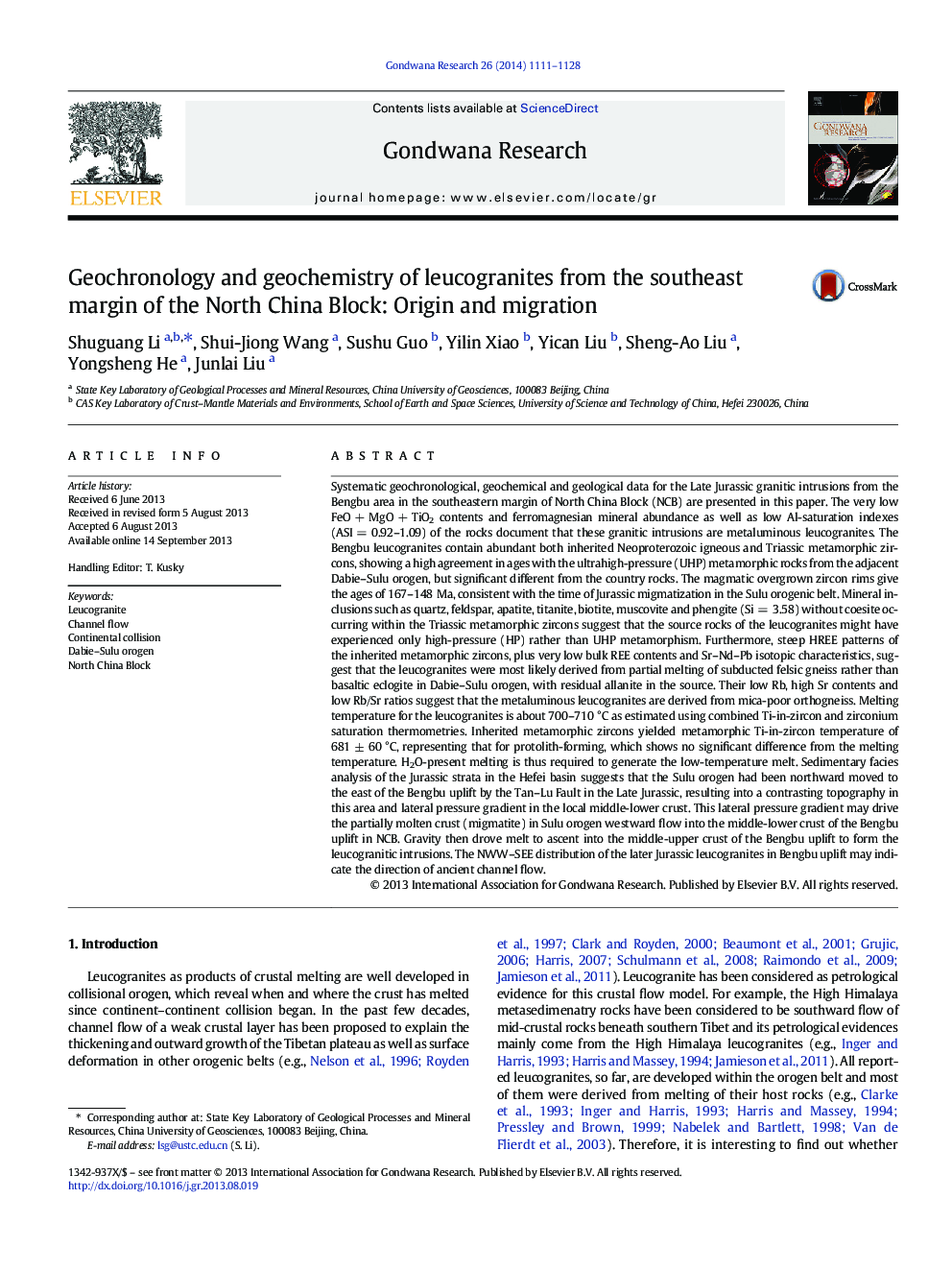| کد مقاله | کد نشریه | سال انتشار | مقاله انگلیسی | نسخه تمام متن |
|---|---|---|---|---|
| 4726843 | 1640142 | 2014 | 18 صفحه PDF | دانلود رایگان |

• A channel flow model is proposed for Dabie–Sulu orogen based on leucogranite study.
• The Sulu molten crust was injected into the NCB crust by a lateral pressure gradient.
• The contrast topography in the area in Jurassic was resulted from the Tan–Lu Fault.
Systematic geochronological, geochemical and geological data for the Late Jurassic granitic intrusions from the Bengbu area in the southeastern margin of North China Block (NCB) are presented in this paper. The very low FeO + MgO + TiO2 contents and ferromagnesian mineral abundance as well as low Al-saturation indexes (ASI = 0.92–1.09) of the rocks document that these granitic intrusions are metaluminous leucogranites. The Bengbu leucogranites contain abundant both inherited Neoproterozoic igneous and Triassic metamorphic zircons, showing a high agreement in ages with the ultrahigh-pressure (UHP) metamorphic rocks from the adjacent Dabie–Sulu orogen, but significant different from the country rocks. The magmatic overgrown zircon rims give the ages of 167–148 Ma, consistent with the time of Jurassic migmatization in the Sulu orogenic belt. Mineral inclusions such as quartz, feldspar, apatite, titanite, biotite, muscovite and phengite (Si = 3.58) without coesite occurring within the Triassic metamorphic zircons suggest that the source rocks of the leucogranites might have experienced only high-pressure (HP) rather than UHP metamorphism. Furthermore, steep HREE patterns of the inherited metamorphic zircons, plus very low bulk REE contents and Sr–Nd–Pb isotopic characteristics, suggest that the leucogranites were most likely derived from partial melting of subducted felsic gneiss rather than basaltic eclogite in Dabie–Sulu orogen, with residual allanite in the source. Their low Rb, high Sr contents and low Rb/Sr ratios suggest that the metaluminous leucogranites are derived from mica-poor orthogneiss. Melting temperature for the leucogranites is about 700–710 °C as estimated using combined Ti-in-zircon and zirconium saturation thermometries. Inherited metamorphic zircons yielded metamorphic Ti-in-zircon temperature of 681 ± 60 °C, representing that for protolith-forming, which shows no significant difference from the melting temperature. H2O-present melting is thus required to generate the low-temperature melt. Sedimentary facies analysis of the Jurassic strata in the Hefei basin suggests that the Sulu orogen had been northward moved to the east of the Bengbu uplift by the Tan–Lu Fault in the Late Jurassic, resulting into a contrasting topography in this area and lateral pressure gradient in the local middle-lower crust. This lateral pressure gradient may drive the partially molten crust (migmatite) in Sulu orogen westward flow into the middle-lower crust of the Bengbu uplift in NCB. Gravity then drove melt to ascent into the middle-upper crust of the Bengbu uplift to form the leucogranitic intrusions. The NWW–SEE distribution of the later Jurassic leucogranites in Bengbu uplift may indicate the direction of ancient channel flow.
Figure optionsDownload as PowerPoint slide
Journal: Gondwana Research - Volume 26, Issues 3–4, November 2014, Pages 1111–1128